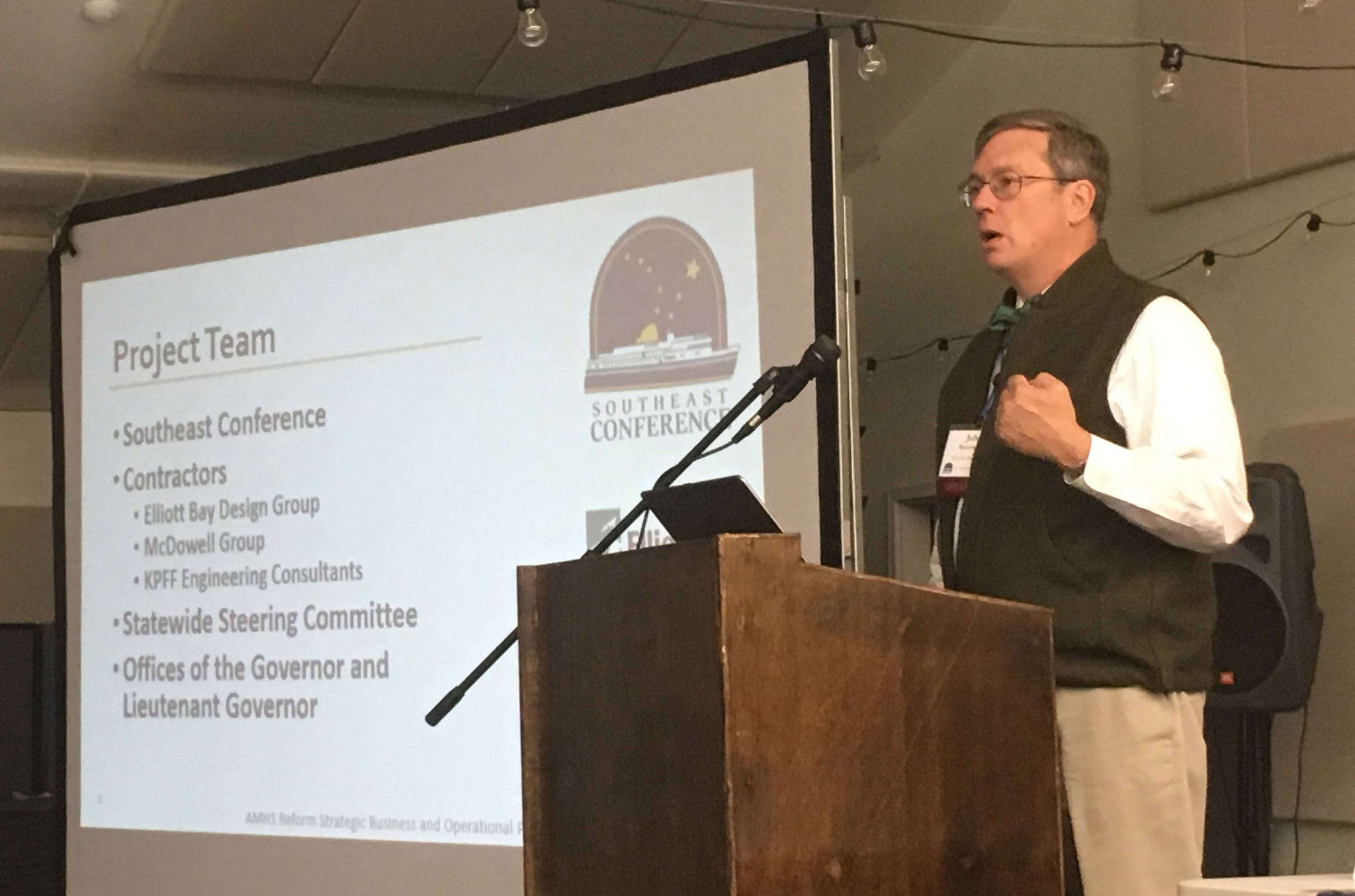HAINES — Southeast Alaska leaders believe they have a solution to some of the problems plaguing the Alaska Marine Highway System: Run it like a railroad.
On Wednesday, members of Southeast Conference formally endorsed a plan to turn the state-run ferry system into a public corporation similar to the Alaska Railroad or the Alaska Aerospace Corporation.
“I strongly suggest crafting legislation … and creating a public corporation that will implement the recommendations,” said Mark Luiken, commissioner of the Alaska Department of Transportation.
Members of Southeast Conference were meeting here in a three-day conference that concluded Thursday.
On Thursday, Rep. Sam Kito III, D-Juneau, said he will craft a bill to be introduced during the upcoming regular session of the Alaska Legislature.
Currently, the state ferry system operates as a branch of the Alaska Department of Transportation. It operates, as its name states, like a marine highway and gets funding just like any other road.
In recent years, that strategy has grown less effective. The Alaska Legislature has repeatedly cut the amount of money given to the ferry system. In fiscal year 2012, the state dedicated $158 million to the system. In fiscal year 2018, that’s down to a bit over $140 million.
Running the ferries under a public corporation doesn’t directly address those cuts (and additional ones expected in future years) but it would help the ferry system react more quickly to ebbs and surges in funding.
Elizabeth Bolling of Ketchikan was a member of the committee that for the past year has been developing the public corporation plan for Southeast Conference.
“It’s an option that we know could be reliable, and we already have examples,” she said.
One of those examples is the Alaska Railroad, which was transferred to Alaska from the federal government in 1982.
The railroad was spun off into a state corporation with a land grant and a cash grant to pay part of its initial expenses. That isn’t likely with the ferry system.
Over the past year, Southeast Conference has been studying the public corporation idea with the support of the state. The organization, which was created in 1958 to lobby for the creation of the ferry system, saw its own state subsidy obliterated by budget cuts but pressed on anyway. Analysis by Elliott Bay Design of Seattle and McDowell Group of Alaska found no way the ferry system can support even reduced operations without direct state support.
“It just won’t happen. It’s a public service that will require public support going forward. Changing to a public corporation won’t change that fact,” said Jim Calvin of McDowell Group.
If no additional funding is likely, and the ferry system can’t support itself without continued subsidy, Kito and other Southeast Conference delegates said they will seek “forward funding” of the ferry system.
That’s an idea that would have the Alaska Legislature allocate a set amount of money for multiple years of operation.
Right now, the ferry system is bound to the state’s fiscal year, which starts July 1 — right in the middle of the peak ferry travel season. Because of that calendar, the state must guess at how much money it will receive from the Legislature when it schedules runs.
If the state gives less money than expected, the ferry system has to cut service and cancel already-booked trips. That discourages ferry travel, delegates said.
Sen. Bert Stedman, R-Sitka, warned Southeast Conference attendees that he believes the Legislature is unlikely to support forward funding right now.
“I think in this budgetary climate, it’s a bridge too far,” he said.
The Southeast Conference plan would also do nothing to fix the system’s immediate problem, a lack of funding that will cause it to shut down in April. A separate Legislative solution will be needed to avoid that shutdown.
This isn’t the first time a public corporation has been suggested for the ferry system. Former Wrangell legislator Robin Taylor suggested the idea several times. In 2002, a bill creating a ferry system public corporation was approved by the Senate Transportation Committee but advanced no further.
While the public corporation idea won’t fix all of the ferry system’s woes, backers said it would address some of the marine highway’s long-term problems.
“If you keep doing the same thing over and over again, you’re going to get the same results,” said former City and Borough of Juneau Assemblywoman Rosemary Hagevig.
• Contact reporter James Brooks at james.k.brooks@juneauempire.com or call 523-2258.

